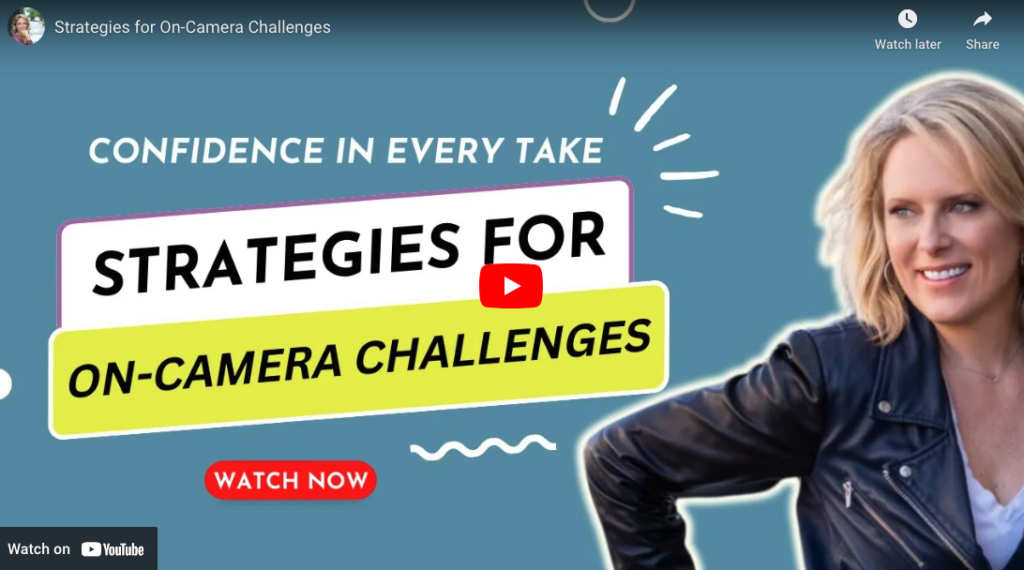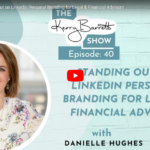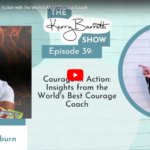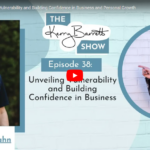
I wanted to share some golden nuggets about effectively communicating on camera—whether you’re going live or recording for later. Here are three takeaways that I hope will resonate with you:
Transcript
If you struggle with looking, sounding and communicating confidently when you’re on video or you’re on camera, this is for you. The secret to looking and sounding confident on camera is to build the skills in order to do so. Sometimes people think that confidence comes from just doing it, do you know that expression, it’s not practice that makes perfect, it’s perfect practice that makes perfect, you’re never going to be perfect on video.
So I want to absolve you of that goal here right out of the gate. However, if you’re practicing with bad skills, or you’re practicing with a misunderstanding of the challenges of the camera, or perhaps even how you can use it effectively, the skills that you build practicing on your own are not actually going to help you you can make progress, it’s just going to take you longer, and it’s going to be a little more painful. And you won’t know all of the things you can do. And all of the different avenues you can explore when you’re communicating.
We have a tendency, there are people who network in person beautifully, who speak on stage beautifully, but put them in front of a camera and they just crumble. And it applies to their social media posts as well. They become more robotic, they get a little more timid, they sort of just blurt out their opinion or what it is that they do. They regale us with a virtual white paper, if you will, of their resume.
And that doesn’t speak to anybody. You’re using your ability to communicate on camera, whether it’s live, whether it’s recorded, whether it’s for a media opportunity, whether it is to external or internal stakeholders to your team, you’re using it to replicate the way that you would normally communicate with someone when you are in front of them. You’re using that to communicate the same way that you would in person. And really, and truly, the only way is to jump with both feet, all the way in the scary thing there is that most of us were not super comfortable speaking on a stage anyway, I know I’ve been there 100%.
And so we combined the idea of speaking on a stage with also then doing it in front of a camera, which is an entirely unnatural environment to be in and one that we don’t necessarily fully understand the challenges and the ways that we have to overcome those challenges. So we shrink because we’re hoping that people won’t see the mistakes. And we’re hoping if we shrink, we can maybe get this exactly right. And while you don’t want to ramble and you don’t want to be superfluous, you do want to understand that videos are human.
And it’s a great place to connect with an emotional component. So if you’re timid, or you feel awkward, or you feel shy, you don’t know the skills. It’s very hard to jump both feet when you think about the first time that you tried to ride a two wheeler bike.
Did you start off without training wheels? That would have been jumping with two feet right in? No you didn’t? you’d likely had training wheels.
Same thing with swimming? Did you march yourself up to the top of the high dive and jump in the deep end? No, you didn’t. You started maybe with floaties.
And you started in the baby pool and somebody held you as you learned to float on your back. Video doesn’t work that way. That stuff is what happens when you practice. That’s the stuff that happens before you’re ready to publish.
Now, you’re not going to have it all figured out. Before you hit publish the first time before you have your first client pitch or before you have your first virtual communication perhaps with investors that you’d like to bring on board into your company, you will have made some of that progress. And then you can jump or at least walk in with both feet firmly planted on the ground.
That is how you begin to build the skills and then you build the confidence and with confidence you start to explore the space. And when you’re exploring this space, you’re thinking about how you can best communicate this particular thing to your audience. Whether it’s a joke, whether it’s a story, whether it’s some important fact or data, minimal data on video sidenote, but what then you think about the audience instead of yourself when you’re out of your head, because you’re all in all of that other stuff begins to naturally elevate.
Because you’re able to use the elements of your natural communication to talk to whoever is on the other side of the lens. Most of us are too scared to jump in with both feet. And I absolutely get it. When you see somebody make a terrible presentation or you see somebody who absolutely whiffs it when they’re up on the stage.
In your mind, often there is a diminished sense of credibility. I’m here to tell you that there is very little though that cannot be fixed. Unless the mistake is egregious. There’s very little you cannot correct. It’s better though, to know what you’re doing before you jump in.
I had a client recently tell me that, before she started working with me. Her skills on the stage in front of the camera to use her words were shameful. She felt deep shame. She felt she had a lowered status, she was less valuable as a team player.
This is something she’d struggled with her entire life. She has about 10 to 15 years left in her career before she’d like to retire. And she realized this is something that she’s never ever taken the steps to fix. And now she’s really scared, but she knows her stuff. And so we’re working on skills that will allow her to jump with both feet into communicating effectively on camera.
And if you’d like to learn how to do the same, you can book an on camera competent strategy call using the link below in the comments.




